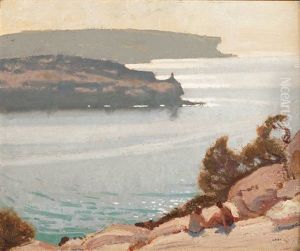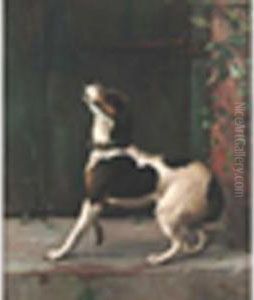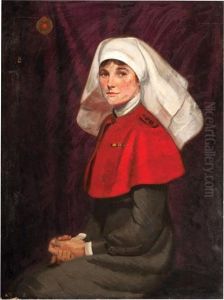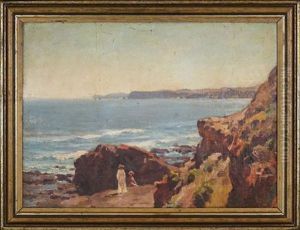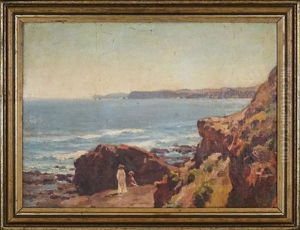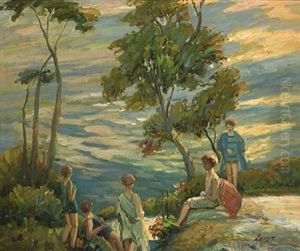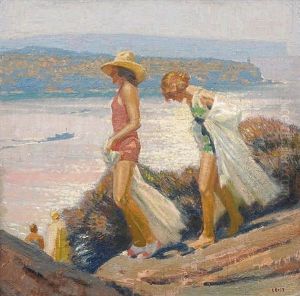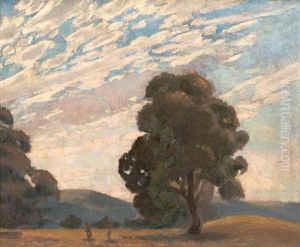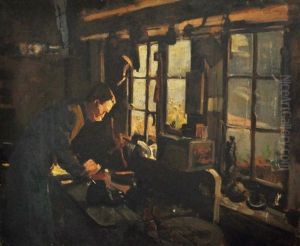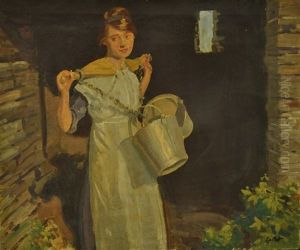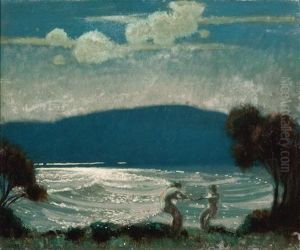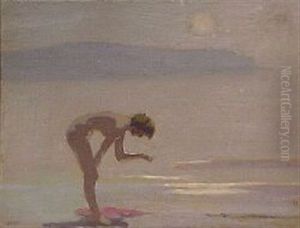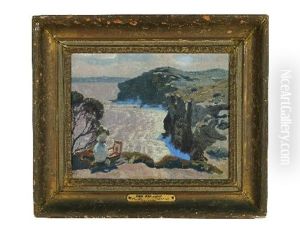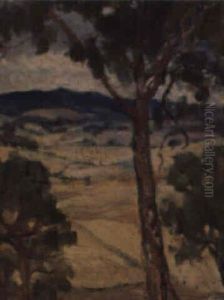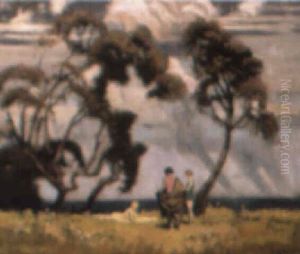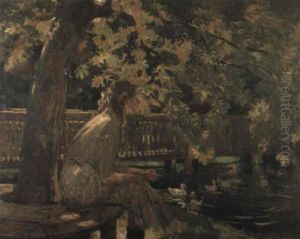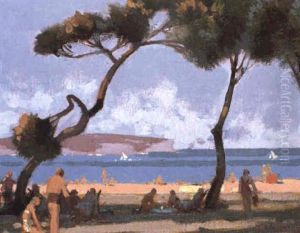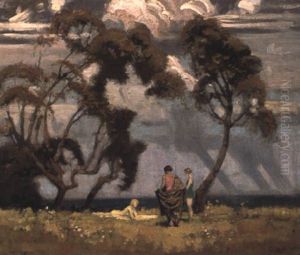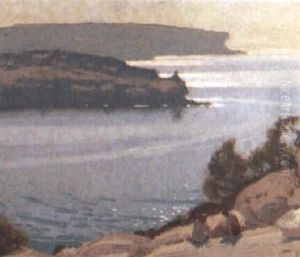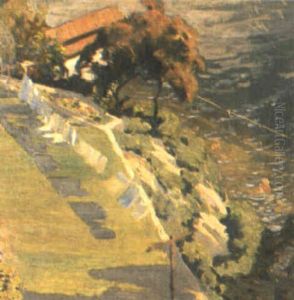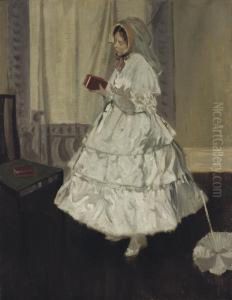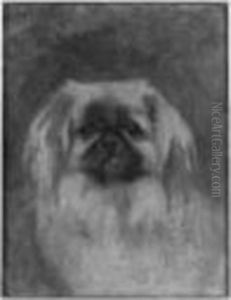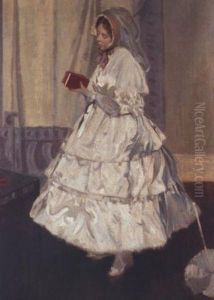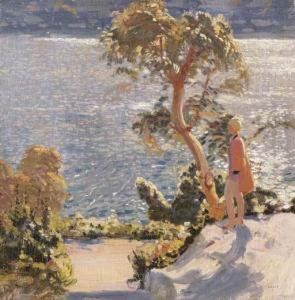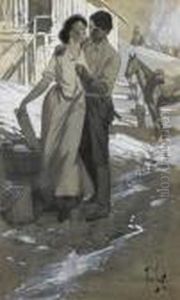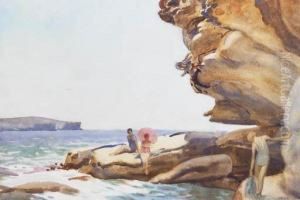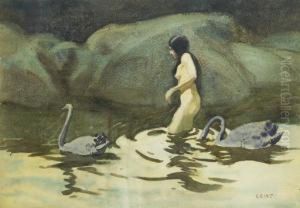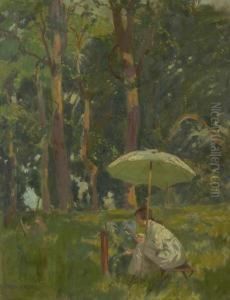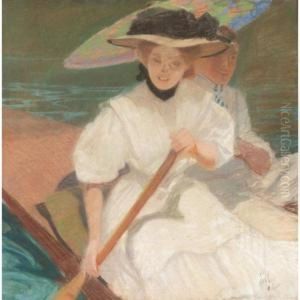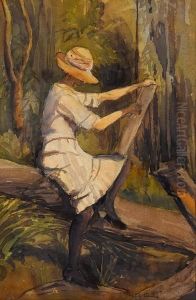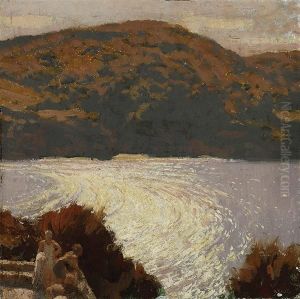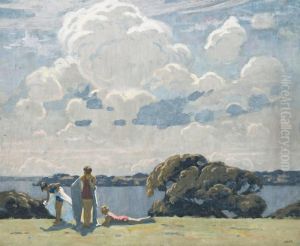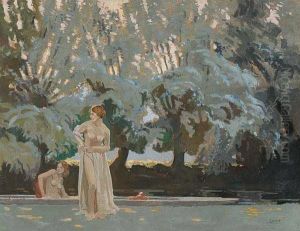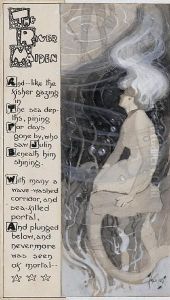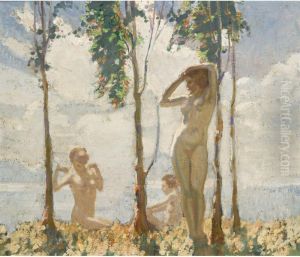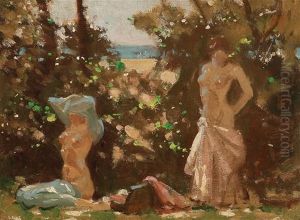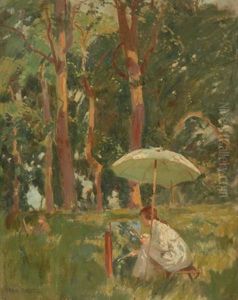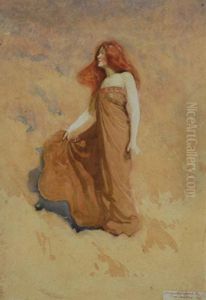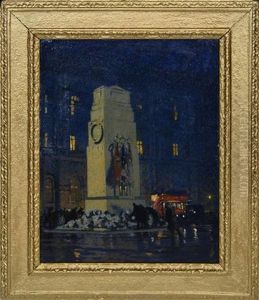Frederick William Leist Paintings
Frederick William Leist was an Australian artist known for his contributions to the field of war art, as well as for his portraits and landscapes. Born on August 28, 1878, in Sydney, New South Wales, Leist showed an early interest in art which led him to study at the Sydney Art School. He honed his skills under the guidance of influential artists like Julian Ashton.
Leist's career started with illustrations for newspapers, which was a common entry point for many artists of his time. His work caught the attention of the public and soon he started receiving commissions for portraits and other works. However, his career took a significant turn during World War I when he was appointed as an official war artist by the Australian government. This role took him to the frontlines where he captured the experiences of Australian soldiers in battlefields across Europe, most notably in France and Belgium.
During his tenure as a war artist from 1917 to 1920, Leist produced a significant body of work that conveyed not only the harsh realities of the conflict but also the more personal and human aspects of war. His paintings from this period are considered important historical documents as well as being artistically significant.
After the war, Leist continued to work as a painter, returning to his earlier themes of portraits and landscapes. He exhibited his work regularly and was well-received by critics and the public alike. His post-war period was marked by a return to a more peaceful subject matter, reflecting the collective need for recovery and normalcy after the years of turmoil.
Frederick William Leist's contribution to Australian art is marked by his ability to capture both the spirit of his time and the zeitgeist of the nation during a period of great struggle and change. He died on October 20, 1945, in Sydney. His works continue to be displayed in art galleries across Australia and are studied for their historical value and artistic merit.
